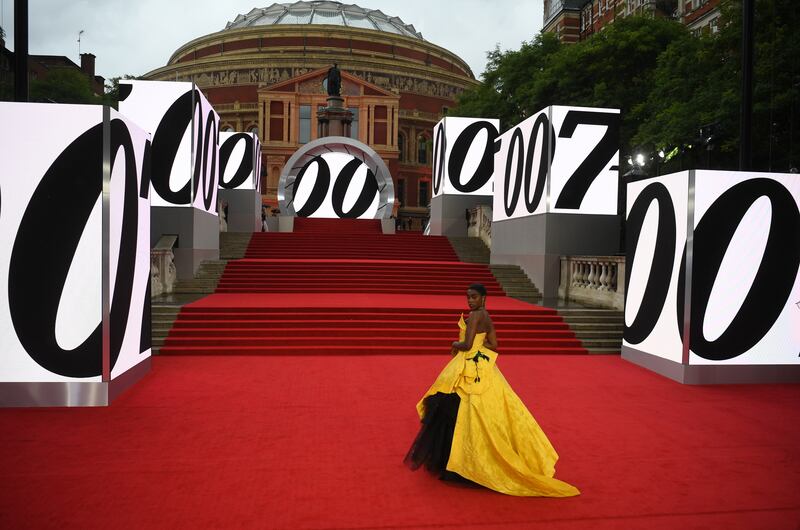If James Bond were a female character, Jemima, would the number of crimes committed by young men go up? What about if Luke Skywalker was Lucy Skywalker? If you want to get ahead and know the answer, here’s a hint: a few extra female characters on TV and in film is not the thin end of the wedge to a rising wave of crime.
But this is in fact the very hypothesis a UK Member of Parliament, Nick Fletcher, posited last month on International Men’s Day.
“One only needs to look at the discussions surrounding who will play the next James Bond. And it’s not just James Bond,” said Nick Fletcher MP. “In recent years, we have seen Doctor Who, Ghostbusters, Luke Skywalker, the Equaliser, all replaced by women, and men are left with the Krays [twins Ronnie and Reggie Kray] and Tommy Shelby [from Peaky Blinders]. Is there any wonder we are seeing so many young men committing crime?”
Do all young people – regardless of their sex, social class, race or ethnicity – need good role models? Of course they do. But the underlying analysis that criminal behaviour is caused by a few of the many, many roles played by men allegedly being taken over by women, is back to front (no one is even suggesting a Jemima Bond, for example).
It’s not that the world has too many female characters. It's that it doesn't have enough! And the same applies to characters and media voices of people of colour and other under-represented groups. Entitlement, omnipresence and homogeneity – all leading to lack of identity in a world of complexity and change – are the toxic problems.
This MP is not an outlier. There is a wider movement that claims that society is supposedly moving to an erasure of men, that men are under threat, that women are taking over.
But this is not what the facts show at all. Consider the systemic under-representation and stereotypical representation of women across media, whether TV, film, news or advertising.
Female characters in the 100 highest grossing movies in the US in 2020, according to the database company Statista, accounted for only 36 per cent of speaking characters that year. In 2019, “The Missing Perspectives of Women in News” report wrote that more than 70 per cent of people seen, quoted and heard in the news are men, while women make up less than 30 per cent. When it comes to "expert" sources, around 80 per cent are men. And in political news coverage, men’s share of voice is up to seven times higher than that of women.
What is being challenged is toxic masculinity, an archetype of male behaviour predicated on machismo, violence, aloofness, self-entitlement and belief in the right to dominance and disdain for others. Toxic masculinity is, by its nature, extremely harmful to women. But it is also harmful to men. It restricts and stifles them. In terms of actions, it perpetuates bad behaviours and then excuses them. And internally, it can lead to a void of self-fulfilment, and many of the mental health disorders increasingly – and rightly – being flagged as under-discussed for men.
Redressing the balance of gender inequality on screen isn’t just good for women; it’s good for men, too. It opens the way for new paradigms of social engagement, of men seeing themselves in different ways, and realising that any inner yearnings to be a different kind of man will find acceptance in the world around them, rather than having to uphold outdated, damaging stereotypes.
Last month, the actor Geena Davis wrote: “If the content we’re making for them has a profound lack of unique and diverse female characters, boys and girls are unconsciously taking in the message that girls and women are not as valuable to our society as men and boys. This may inform their views throughout their lives.”
Davis launched the Geena Davis Institute on Gender In Media in 2004 precisely to look at how women are represented (or not represented). In the same extract from her recently published book The Female Lead: We Rise by Lifting Others she explains: “Just show kids from the beginning that boys and girls share the sandbox equally, that they are equally impressive, fun and essential, and they’re each half of the population.”
If we want young men to better understand their place in society and the positive role they can play, the obvious point is that the status quo is not working. To entrench it is to make it harder to create positive change. But changing the status quo – particularly for those used to seeing themselves everywhere and in everything, as the centre of the universe and the norm – can be uncomfortable, painful even. But the saddest part is that resistance is coming against changing a status quo that is toxic for the very people who want to retain it. The answer instead is as the title of Davis book suggests: we rise by lifting others.





